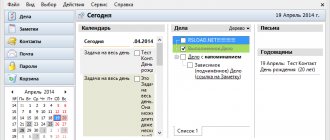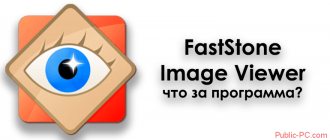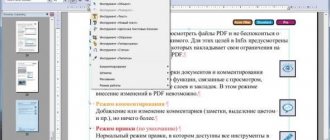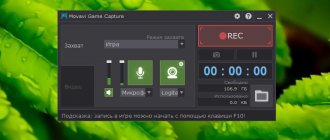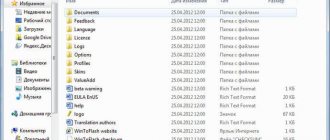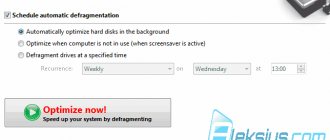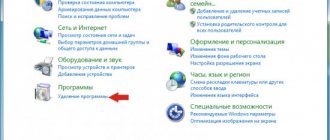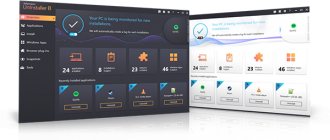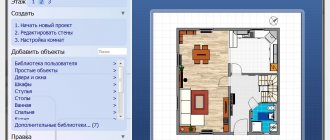Aurora 3D Animation Maker is a multifunctional software that allows you to create beautiful three-dimensional animation videos, titles, interactive logos, etc. Using the application, you can edit and customize finished animations, post them on the Internet, save finished projects in TGA, PNG, BMP, and also JPEG.
By clicking on the link below, anyone can download Aurora 3D Animation Maker 16 for free with an activation key. In the meantime, let's talk about the features, advantages and functions of the application.
Possibilities
Aurora 3D Animation Maker is equipped with all the necessary tools for creating 3D animations and videos, three-dimensional texts, effective logos, and titles. The program offers many built-in effects: fireworks, snow, smoke, flames, etc. They can be applied to any shapes.
The software is also used to edit finished projects (video duration, playback speed and smoothness, compression ratio).
List of other features and useful tools:
- Availability of a time scale and the ability to set its parameters.
- Lots of built-in effects and transitions.
- With the help of additional rotation effects (wave, swing, ripple, shock), users can vary the movement options as well as animations.
- Export files to the Network.
Advantages and disadvantages
Main advantages of Aurora 3D Animaton Maker:
- Availability of extensive libraries of shapes (over 4 thousand options).
- Convenient and simple controls.
- Large list of built-in tools.
- Possibility of introducing various types of animation objects.
- Flexible settings for the movement of figures.
- Availability of tools for converting files into a convenient format.
- Stable and fast operation of the application.
- Acceptable system requirements.
- The ability to create presentations and a large selection of “transitions” between them.
- Export files and support most popular formats.
- Dynamic background support.
- Access to options for deforming objects and text information.
No deficiencies were identified.
Object approach
The oldest player in the cinema audio market, Dolby Laboratories, uses two “layers” of speaker systems in its new Dolby Atmos format. The first is located around the listener according to the classical scheme, and the second on the ceiling - in pairs on the left and right. But the most important thing is a fundamentally new approach to mixing soundtracks. Instead of the usual channel-by-channel mixing, the studio uses the “object” recording method. The director works with sound files, specifying the location in three-dimensional space from where these sounds should be played, when and at what volume. For example, if it is necessary to reproduce the noise of a moving car, then the director indicates the time of appearance, volume level, trajectory of movement, place and time of termination of the sound of the “object”.
Technologies
Not only porn and cats: entertainment hidden in the browser
Moreover, sound comes from the studio to the cinema hall not in the form of recorded tracks, but as a set of sound files. This information is processed by a processor, which in real time calculates the soundtrack of the film each time, taking into account the number of speakers in the hall, their type and location. Thanks to precise calibration, there is no reference to any “typical” number of channels, and you can use different numbers of speakers in different halls (each hall is calibrated and configured individually) - the processor itself will calculate how and where to send the sound to obtain the optimal sound panorama. The maximum number of simultaneously processed sound “objects” is 128, and the number of simultaneously supported independent speakers is up to 64.
Dolby Atmos is not tied to a specific number of audio channels. The sound picture is formed by the processor in real time from “objects” and according to a “program” compiled by the film’s sound engineer. In this case, the processor takes into account the exact location of the speaker systems, their type and quantity - all this is pre-prescribed in the settings when calibrating each specific hall. True, how to implement such an approach in a home theater is not yet entirely clear.
How to create something other than a zombie: features of 3D character animation
As the modern wisdom goes: nothing is zombies but zombies. And if your hero is not him, then the character animation should be “live”, or, as they say nowadays, believable. The viewer must believe that the hero really walks, looks, grimaces or smiles , and interacts with the environment.
Creating and animating a 3D character is about creating a story that is told not with words on paper (or screen), but with movement. For example, a hero's facial expressions can say a lot about character. But to do this, he must have a face of sufficient “quality” to make the muscles move.
When a question is approached without due diligence or half-heartedly, as a rule, the result is something at least unnatural, and sometimes even frightening.
Therefore, let's take the ideal model as a starting point and see what can be done with it:
- Animate by keyframes;
- Animate along a path;
- Create animation in a dynamic environment;
- Animate using motion capture.
Each of the methods is most easily explained by considering not only the technology, but also examples.
Keyframe animation: from point A to point B
Keyframing is one of the most common ways to create 3D character animation. The essence of the method is this: several main points are specified on the time scale at which the position or shape of the object changes. The animator sets the necessary parameters of the model in the specified frames, and the program calculates the “intermediate” states automatically.
Example : For simplicity, let's take a rubber ball that hits the ground and bounces up. To display one such “jump”, the process must be divided into three stages: the ball at the top point - the ball on the ground - the ball again at the top point. In a good way, you should set more key frames, take a bunch of little things into account. Like the fact that when dropped, the rubber casing stretches, and when hit, it flattens.
If you correctly deform an object at each fixed point in time, the 3D animation will turn out to be as natural as possible.
Path animation
3D character models are not always people or animals. Our hero can be any object, for example, a flying camera or a UFO (in general, anything that your imagination allows for). In this case, blinking lights and rotating along an axis will not be enough - it will not be interesting. But to make an object fly along a trajectory, and even “send” the camera to monitor its movement, approaching and moving away in time...
Animation along a trajectory and skillful handling of focus (this is what a 3D animation studio should definitely be able to do) will turn a simple twirling of an object in space into an exciting almost blockbuster.
The essence of the method is to:
- set the starting point (the beginning of the object's path);
- designate the trajectory (the path taken by the object);
- indicate the end point (where the model should stop).
After the character/object is “attached” to the trajectory, the program itself calculates and creates the movement. If you add animation of the object itself (flapping wings, opening airlocks, extending the landing gear) and “play” with the camera, you can achieve very interesting effects.
The CLONE studio team knows exactly how to make a simple movement along a laid out route visually attractive and breathtakingly dynamic.
Animation in a dynamic environment
Our hero is not in a vacuum. Any character is surrounded by some kind of reality , in which there is necessarily gravity (if it is not in space), the movement of air masses and other types of vibrations. All this should be taken into account so that the character animation is quite realistic.
What does the result of such an animation look like and where can it be seen?
In detail. When a character walks through the city and the cape flutters in the wind, or when underwater the hair sticks to the face - all this is achieved through animation taking into account the surrounding factors.
Strictly speaking, animation in a dynamic environment is more of a computational work with a deep immersion in the physical characteristics of objects. But without all this, even the most detailed 3D modeling with texture development will not make the character more alive.
Motion capture: turning a film into a cartoon
Motion capture technology is young, but very popular. Today motion capture is used in almost all science fiction films. The essence of this method is extremely simple:
- sensors are attached to the actor;
- While the actor is moving, the cameras record the positions of the sensors;
- their displacement is processed by the program and creates a moving “skeleton” with a set of key frames;
- the resulting package of information is “covered” with a shell - for this, 3D character modeling is used.
As a result, the hero’s actions turn out to be realistic and convincing, and the animators don’t have to struggle with physics and remember where things bend.
Using 3D animation
3D animation is used in almost all areas of our lives, including marketing :
- Increasingly, brands are choosing 3D animation to create colorful advertising videos - it does not limit the imagination of artists and allows them to realize any ideas;
- 3D graphics are also used to quickly coordinate the sizes of banner layouts and outdoor advertising
- not a single screensaver for a TV show, news or video is complete without 3D graphics;
- owners of restaurants and shops not only order 3D videos, but prefer to turn to 3D modelers to visualize their future establishment ;
- manufacturing companies use 3D to better promote their products (in catalogs, presentations);
- designers and architects constantly use 3D graphics to visualize their projects - people perceive images close to photographs much easier than complex drawings.
3D animation videos have many advantages over regular videos. For example, with their help you can create a whole new world populated by impressive characters. more about the benefits of 3D animation in our article.
